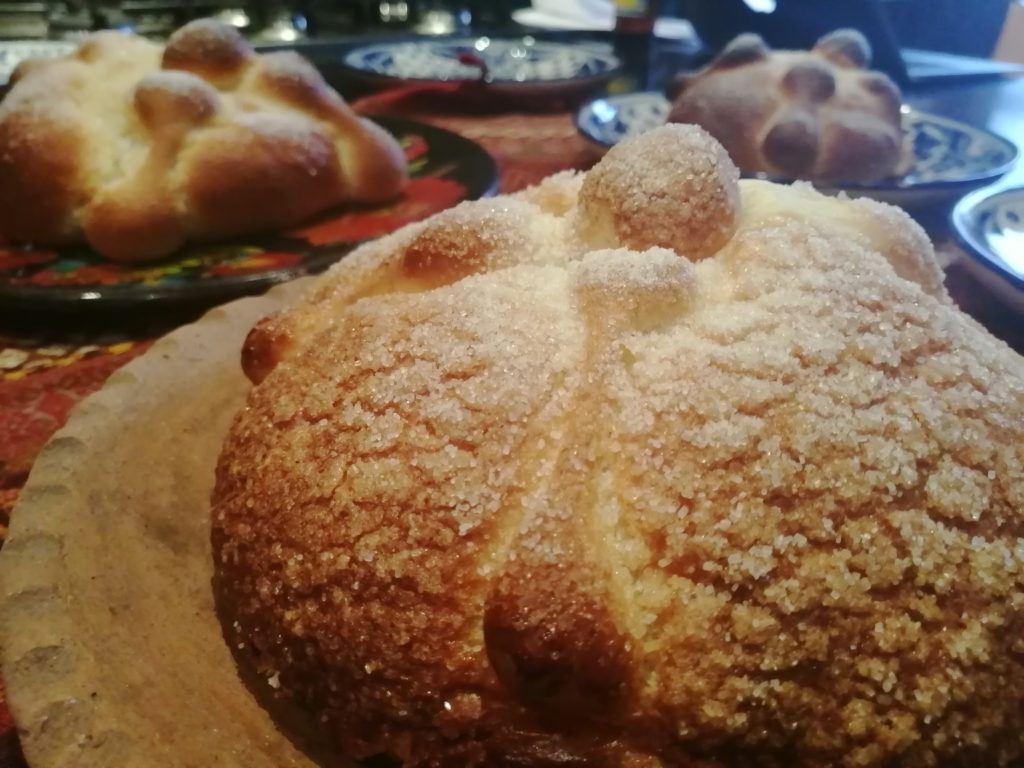
This year for Day of the Dead I had a much more intimate pan de muerto making experience than last year. I asked two good friends, Jorge and Beto, that run the cool yet cozy Casa Jacaranda cooking school if they would be willing to spend an afternoon making this special seasonal bread with me in their giant marble-slabbed production kitchen.
Pan de Muerto is one of the key elements to a perfect Day of the Dead celebration and it’s often offered on the altars in people’s home as yet another one of the delicious foods put out for loved ones that have passed away. While I’m pretty confident in my baking skills, I wanted to have this experience with friends, as the holiday itself seems to call on us to get together, tell stories and eat great food.
We started around noon, and even though Beto had prepared the yeast sponge in advance, it still took us almost seven hours to make the complete recipe. We ended up with eight lovely loaves of sugary pan de muerto (we doubled the below recipe). I wanted to share this recipe with you so that you can attempt this incredible bread wherever you are in the world. But be advised, it’s best made beside people you like, with breaks for lunch and tequila and lots of laughter in-between.
This is the Casa Jacaranda recipe, born of many years of trail, error and patience. Enjoy!
Ingredients:
500g Flour
15g Dry Instant Flour
150g Sugar
6g Salt
2 Eggs
90g Butter without salt
200ml room temperature milk
The rind of a single orange
1 egg for the egg wash
1 tablespoon of orange blossom water
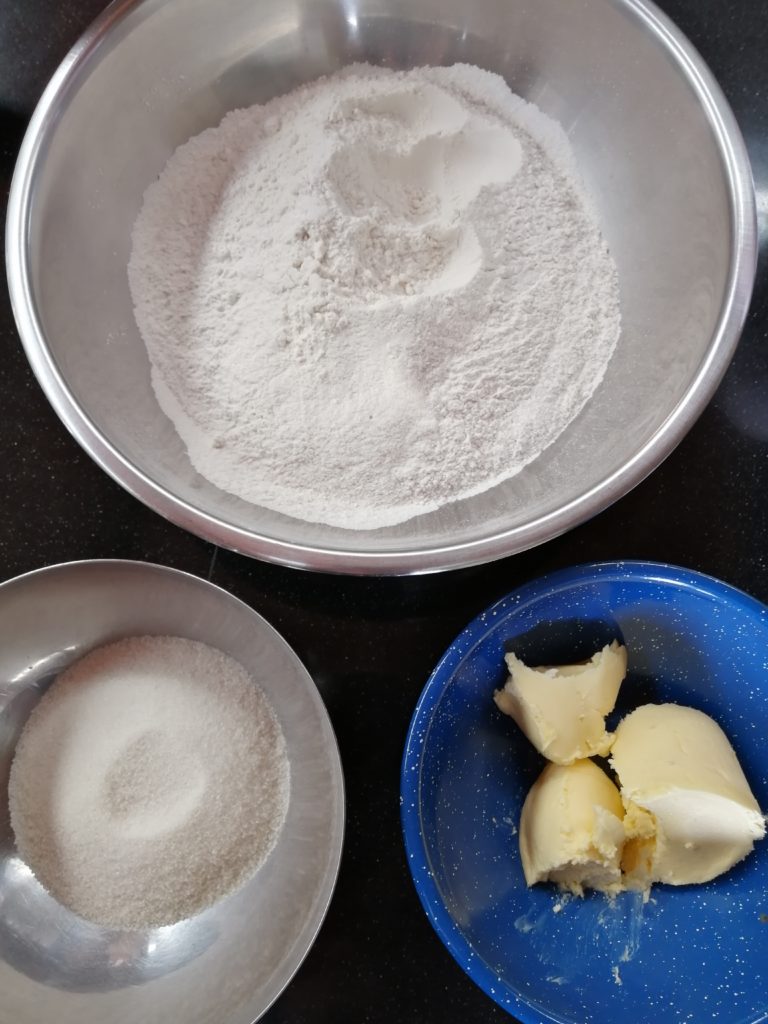
The Sponge
Mix 3 tablespoons of flour from the 500 g you have already measured out, the yeast, and a teaspoon of sugar 3 cucharadas. Add some room temperature milk also from the amount you have already measure, just even to thicken it. (Beto’s recipe calls for it to be the thickness of atole, which if you haven’t ever had is a bit like thick chocolate milk). Place it in a warm corner for it to ferment. You can make the sponge about an hour before, and it should double in size before you use it.
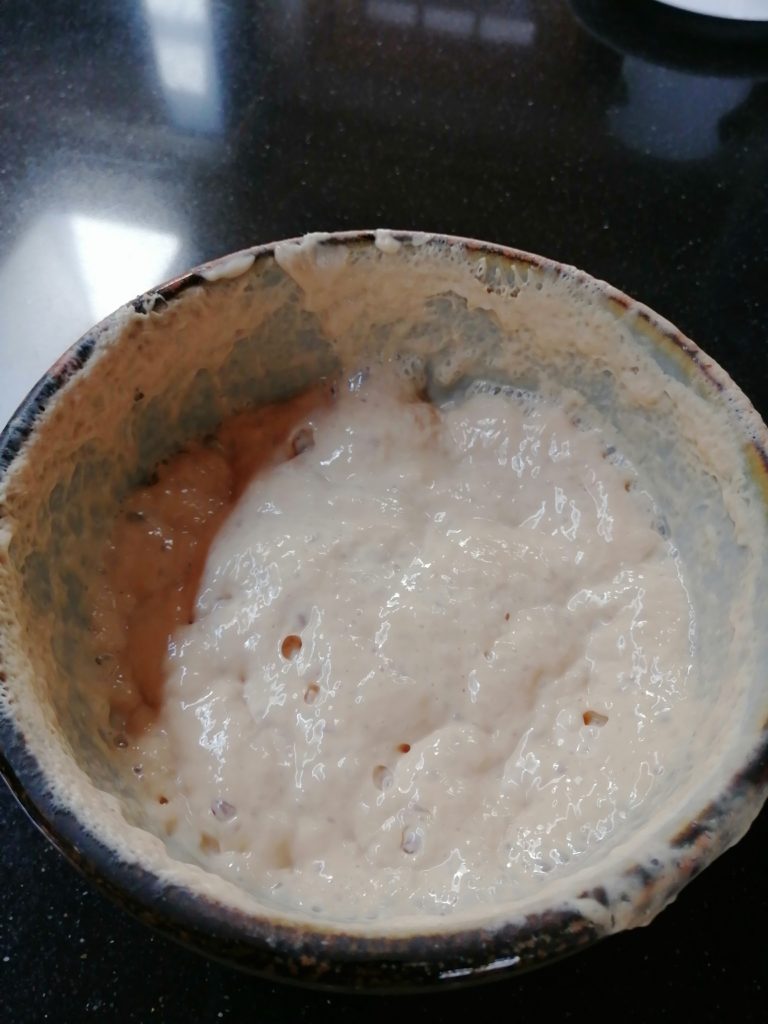
The Dough
Mix the remaining flour, half the sugar, the salt, eggs, butter, orange peel and orange blossom water. Add the remaining milk and mix until just integrated. (this can be done in a mixer)
Add the rest of the sugar
Add the sponge and mix until the dough when pulled apart looks a little like mesh, with holes in it.
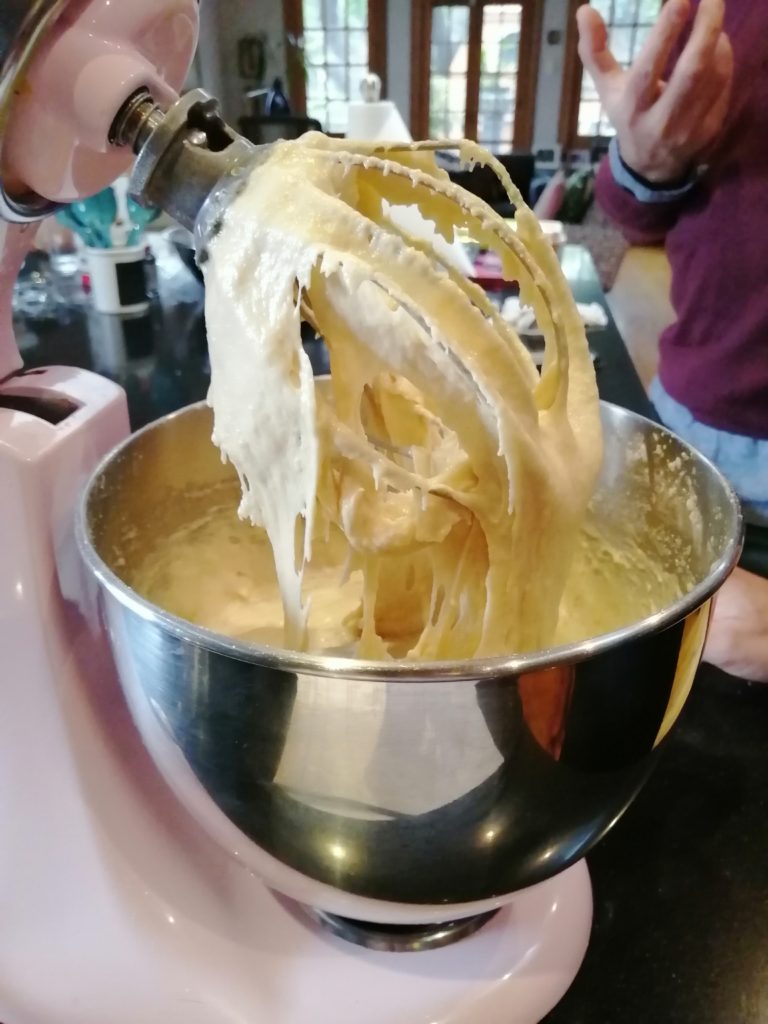
Take the dough out of the mixer and start to mix on the counter with your bare hands. Be sure to play some music you love and trade off with others between kneading and sipping cocktails.
Knead by scooping and turning the dough, lifting it up off the counter and smacking it back down, until the dough is no longer sticking to the surface. This might take about 30 minutes.
Once the dough is no longer sticking to the surface, divide it into two parts and place each in a bowl greased with vegetable oil.
Cover each bowl with plastic wrap and set in a warm place until it doubles in size.
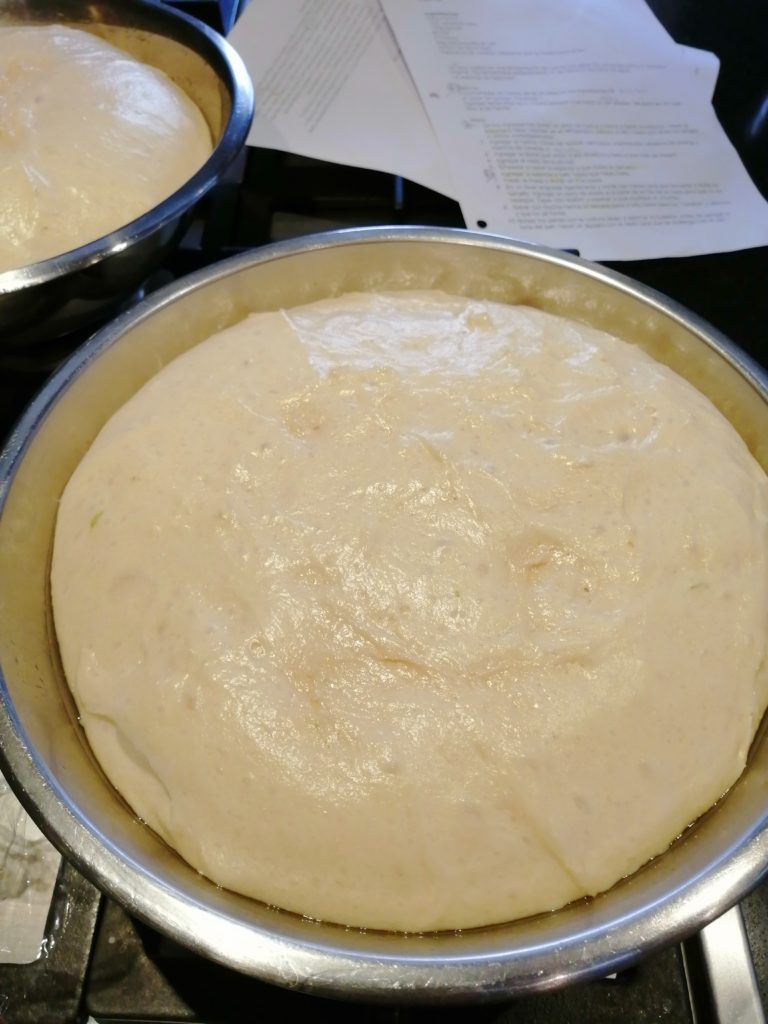
Once doubled, you should gently removed the dough from the bowls and divided it again into the size you want for your pan de muerto. The dough doubles again so think in advance how big you want the loaves, you can make them any size you want.
Set aside part of your dough for making “huesos” or bones to go on top. That section of the dough will require more flour added so that it’s tougher than the main loaf dough. This is so that when you place the bones on top of the loaf they won’t sink into the top and be formless.
Roll out your loaf sections of dough into balls on the counter, tucking under any ugly edges so that the top of the loaf is smooth. Set them on greased cookie sheets with plenty of room in between because like I said, they will double in size.
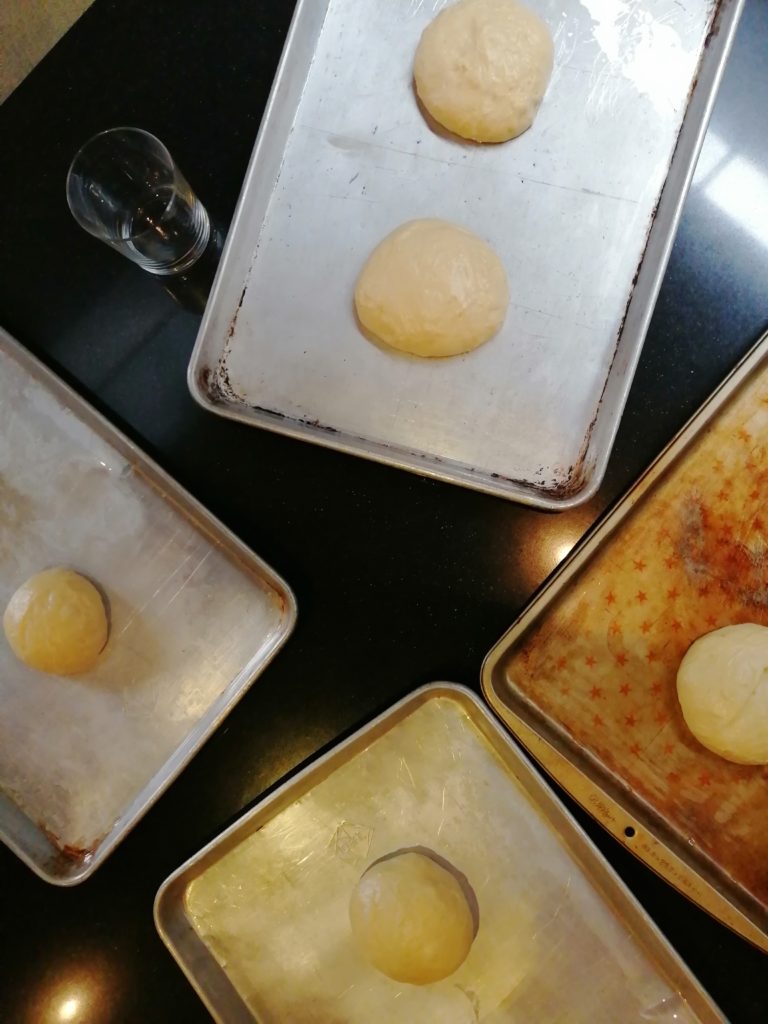
Once each ball has been made, take tiny strips of dough about an inch long and a half inch thick (like little sausages) and roll them between three fingers so that between each finger is a little bump. It will end up a looking a little like a bone if you stretch the imagination.
Place them on the tops of the loaves in a cross.
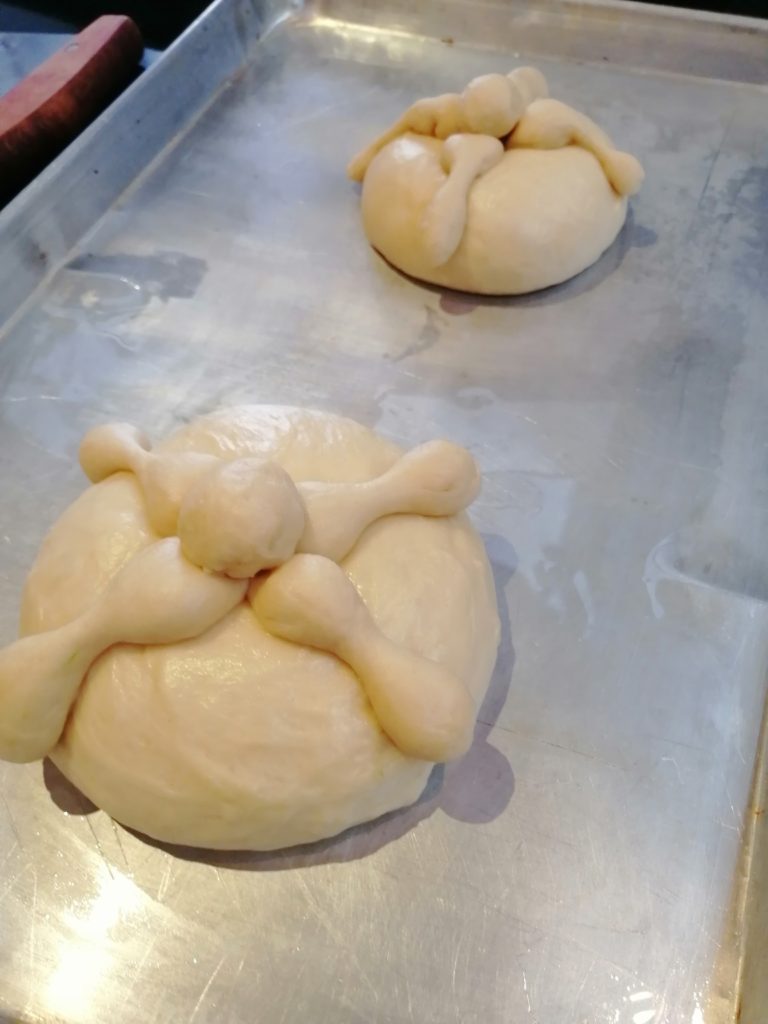
Then stick a finger into the center of cross (deep into the bread mind you) and place a smaller ball on top.
There are two ways to create the sugar topping on these beauties. You can either egg wash the loaf and sprinkle sugar on top until it is no longer soaking into the egg but shows up white on top (this will create a crunchy, sweet crust on the top of the bread) or you can wait until they come out of the oven, baste them in butter and sprinkle sugar on top then (the amount is up to you and your sweet tooth).
Bake the loaves at 200 degree C for 10-25 minutes, keeping an eye on them. Once they are golden brown on top kind of like how kaiser buns look, they are done and you will know for the next batch how long you want to leave them in.
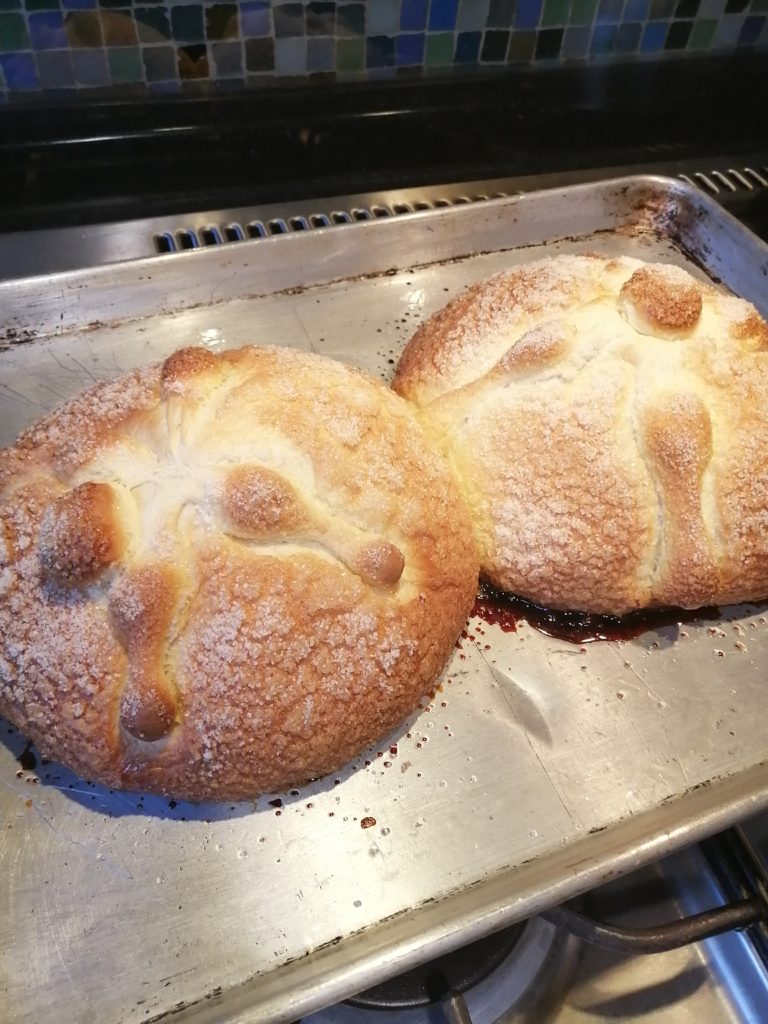
If you are using sugar method two, baste them with butter once they have had a minute or two to cool and sprinkle with sugar.
Make yourself a cup of coffee or hot chocolate and feast!
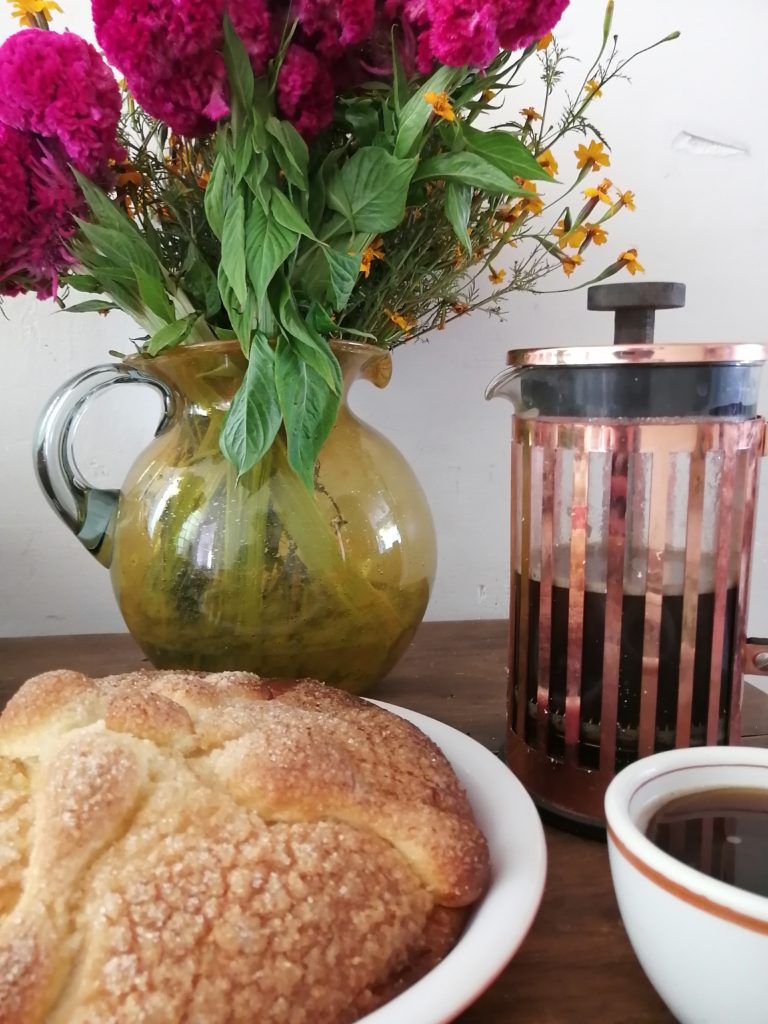
Let me how your pan de muerto turns out! And don’t forget to leave a little for the altar.
Click here to subscribe via RSS
